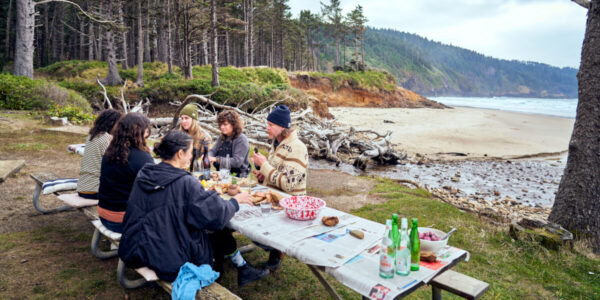
How to Survive If You Get Lost Hiking
Even the most experienced hikers can get lost. Here’s a step-by-step instructional of what to do if you can’t find your way.

Getting lost while hiking can be terrifying, but it’s when you’re lost that you most need your wits about you. Use these seven essential steps so that if you do get lost, you’ll have an idea of what to do, and consult our article on how to prevent yourself from getting lost before you head out on the trail.
1. Stop Walking
Take a deep breath, so you can slow your racing mind. Don’t panic.
Panicking is the worst thing you can do. When you panic, you start acting irrationally. So just stop and stay put, exactly where you are, until you feel calm again. Take as many deep breaths as it takes.
2. Consider Turning Off Your Phone
If you don’t have reception or a compass app, or don’t have any photos on it to help you retrace your steps, turn it off to conserve the battery. You can turn it back on later to check for reception.
3. Try to Retrace Your Steps
Flash back in your mind, and if you have a pencil, write down how you got where you are with any illustrations of particular trees, landmarks, stairs, mountains you saw, or trail names. Repeat: do not move or go far to see them. Just close your eyes and think back.
4. Orient Yourself with a Compass
(That is, if you have one.) Know which way is north, south, east and west. Some phones have compasses.
5. Gauge Your Distance
Pull out your trail map and try to determine how far you hiked down the trail. Some phones and apps will even tell you how far you hiked. It’s possible you went off the trail without knowing it—try to get some idea of where you might be. The map might have natural markers that you can use, such as a stream, mountain, monument, or grove of trees.
6. Consider Your Options
You may want to write down all the possibilities you can think of: staying put where you are and finding a sleeping spot for the evening; trying to hike out and rescue yourself; or, if you are desperate or in need of medical assistance, creating some kind of rescue signal.
If you are not extremely confident in your route, if you are injured or near exhaustion, or if it’s near nightfall, stay where you are.
7. Enact Your Plan of Action
Staying put: By staying put, you make it easier for a search party to find you. If you are planning to shelter in place for the evening, create an angled tarp shelter. Use a tarp or whatever fabric you have and tie it to a branch on both top sides. At the bottom, stake the tarp with sticks through its eyelets, tying the tarp strings to the stick with a bow knot, or weigh the tarp down with a few rocks. Then, create a fire ring and a small, contained fire to keep yourself warm. If you don’t know how to make a fire and don’t have matches or a firestarter, try these methods. Look for a spring or stream that will provide a water source, and boil that water in whatever receptacle you can find. You can boil water by finding a receptacle, even a plastic one, and hanging it from a tripod of branches high above the fire.
Hiking out: If you are very confident in your path and are going to try to find your way out, stay on the trail to avoid getting more lost. Trails are marked with diamond markers and signs where intersections meet. The Forest Service says that if the trail is not working for you, you have the option of following a drainage pipe or stream downhill, but you should know this can be a hazardous and difficult path. No matter which route you take, stop, drink water, and rest when you are tired. Avoid hiking between 10 a.m. and 4 p.m. when the day is at its hottest so you don’t tax your body. Hike slowly and don’t ignore any bodily aches and pains, including headaches. Don’t eat while hiking, since it puts a toll on your body to do both at the same time; instead, rest in the shade for half an hour while eating.
Creating a rescue signal: Use a whistle to make noise, since your voice doesn’t carry as far as you’d think. Use a mirror, a CD-ROM you brought, or pieces of shiny trash such as aluminium foil or cans, to flash light up to any potential rescuers. If those methods don’t help, consider making a smoky, controlled fire. Learn more about making smoke signals.
